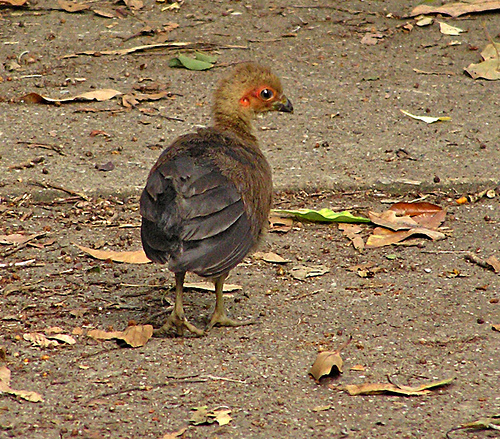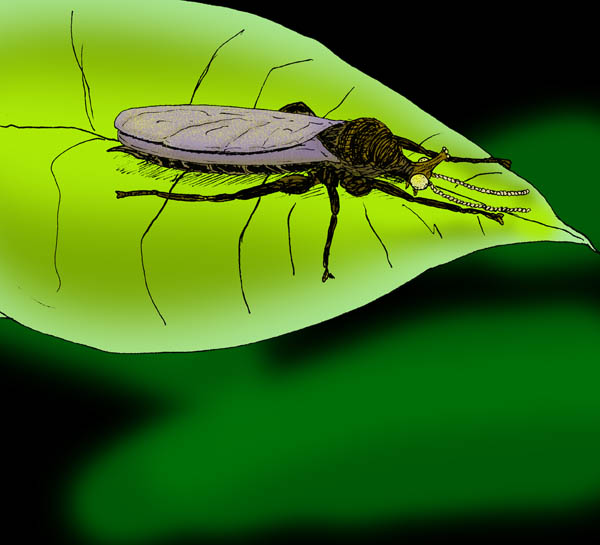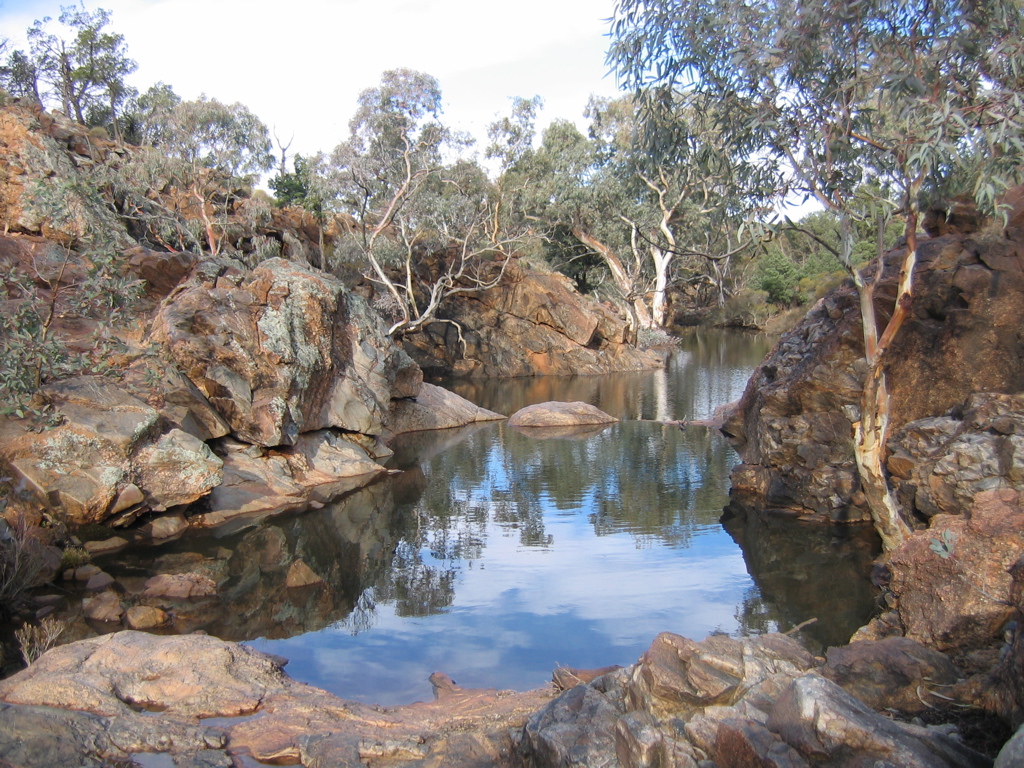|
Gobioolithus
''Gobioolithus'' is an oogenus of fossil bird egg native to Mongolia. They are small, smooth-shelled, and elongated eggs that were first discovered in the 1960s and early 70s during a series of fossil-hunting expeditions in the Gobi desert. Two oospecies have been described: ''Gobioolithus minor'' and ''G. major''. The eggs were probably laid in colonial nesting sites on the banks of rivers and lakes. ''G. minor'' is unusual because it frequently is found with embryonic skeletons of the enantiornithine bird ''Gobipipus''. These embryos have well-developed wings, which suggest they would be able to fly very soon after hatching, unlike most modern birds. Description ''Gobioolithus'' eggs are small and smooth-shelled. They are asymmetrically shaped, similar to many modern bird eggs, with one end pointier than the other. The two oospecies are distinguished mainly by their size: ''G. major'' ranges from 50 to 53.5 mm long and 25 to 32 mm across, with an eggshell thickness ... [...More Info...] [...Related Items...] OR: [Wikipedia] [Google] [Baidu] |
Gobioolithus Minor Section
''Gobioolithus'' is an oogenus of fossil bird egg native to Mongolia. They are small, smooth-shelled, and elongated eggs that were first discovered in the 1960s and early 70s during a series of fossil-hunting expeditions in the Gobi desert. Two oospecies have been described: ''Gobioolithus minor'' and ''G. major''. The eggs were probably laid in colonial nesting sites on the banks of rivers and lakes. ''G. minor'' is unusual because it frequently is found with embryonic skeletons of the enantiornithine bird ''Gobipipus''. These embryos have well-developed wings, which suggest they would be able to fly very soon after hatching, unlike most modern birds. Description ''Gobioolithus'' eggs are small and smooth-shelled. They are asymmetrically shaped, similar to many modern bird eggs, with one end pointier than the other. The two oospecies are distinguished mainly by their size: ''G. major'' ranges from 50 to 53.5 mm long and 25 to 32 mm across, with an eggshell thickne ... [...More Info...] [...Related Items...] OR: [Wikipedia] [Google] [Baidu] |
1996 In Paleontology ...
References * Pasch, A. D., K. C. May. 2001. Taphonomy and paleoenvironment of hadrosaur (Dinosauria) from the Matanuska Formation (Turonian) in South-Central Alaska. In: ''Mesozoic Vertebrate Life''. Ed.s Tanke, D. H., Carpenter, K., Skrepnick, M. W. Indiana University Press. Pages 219–236. 1990s in paleontology Paleontology Paleontology (), also spelled palaeontology or palæontology, is the scientific study of life that existed prior to, and sometimes including, the start of the Holocene epoch (roughly 11,700 years before present). It includes the study of fossi ... [...More Info...] [...Related Items...] OR: [Wikipedia] [Google] [Baidu] |
Oogenus
Egg fossils are the fossilized remains of eggs laid by ancient animals. As evidence of the physiological processes of an animal, egg fossils are considered a type of trace fossil. Under rare circumstances a fossil egg may preserve the remains of the once- developing embryo inside, in which case it also contains body fossils. A wide variety of different animal groups laid eggs that are now preserved in the fossil record beginning in the Paleozoic. Examples include invertebrates like ammonoids as well as vertebrates like fishes, possible amphibians, and reptiles. The latter group includes the many dinosaur eggs that have been recovered from Mesozoic strata. Since the organism responsible for laying any given egg fossil is frequently unknown, scientists classify eggs using a parallel system of taxonomy separate from but modeled after the Linnaean system. This "parataxonomy" is called ''veterovata''. History The first named oospecies was '' Oolithes bathonicae'', a name given provisi ... [...More Info...] [...Related Items...] OR: [Wikipedia] [Google] [Baidu] |
Barun Goyot Formation
The Barun Goyot Formation (also known as Baruungoyot Formation or West Goyot Formation) is a geological formation dating to the Late Cretaceous Period. It is located within and is widely represented in the Gobi Desert Basin, in the Ömnögovi Province of Mongolia. Description It was previously known as the Lower Nemegt Beds occurring beneath the Nemegt Formation and above the Djadokhta Formation. It has been suggested that the Djadokhta and Barun Goyot Formations are lower and upper parts, respectively, of the same lithological unit and the boundary between the two does not exist. The stratotype of the Barun Goyot Formation is the Khulsan locality, east of Nemegt. At Nemegt, only the uppermost barungoyotian beds are visible. The ''Red Beds of Khermeen Tsav'' are also considered part of the Barun Goyot Formation. It is approximately in thickness,Gradzinski, R.; & Jerzykiewicz, T. (1974). Sedimentation of the Barun Goyot formation. Palaeontologica Polonica, 30, 111-146. and was l ... [...More Info...] [...Related Items...] OR: [Wikipedia] [Google] [Baidu] |
Ephemerality
Ephemerality (from the Greek word , meaning 'lasting only one day') is the concept of things being transitory, existing only briefly. Academically, the term ephemeral constitutionally describes a diverse assortment of things and experiences, from digital media to types of streams. "There is no single definition of ephemerality". With respect to unique performances, for example, it has been noted that " hemerality is a quality caused by the ebb and flow of the crowd's concentration on the performance and a reflection of the nostalgic character of specific performances". Because different people may value the passage of time differently, ephemerality may be a relative, perceptual concept: "In brief, what is short-lived may not be the object itself, but the attention we afford it".Ronald Beiner, ''Political Philosophy: What It Is and Why It Matters'' (2014), p. 10. Ephemerality and nature Geographical features An ephemeral stream is that which only exists following precipitation ... [...More Info...] [...Related Items...] OR: [Wikipedia] [Google] [Baidu] |
Parataxonomy
Parataxonomy is a system of labor division for use in biodiversity research, in which the rough sorting tasks of specimen collection, field identification, documentation and preservation are conducted by primarily local, less specialized individuals, thereby alleviating the workload for the "alpha" or "master" taxonomist.Allen, William (2001). ''Green Phoenix: Restoring the Tropical Forests of Guanacaste''. Oxford University Press. pp. 132–136. . Parataxonomy may be used to improve taxonomic efficiency by enabling more expert taxonomists to restrict their activity to the tasks that require their specialist knowledge and skills, which has the potential to expedite the rate at which new taxa may be described and existing taxa may be sorted and discussed. Parataxonomists generally work in the field, sorting collected samples into recognizable taxonomic units (RTUs) based on easily recognized features. The process can be used alone for rapid assessment of biodiversity. Some research ... [...More Info...] [...Related Items...] OR: [Wikipedia] [Google] [Baidu] |
Neognath
Neognathae (; ) is a infraclass of birds, called neognaths, within the class Aves of the clade Archosauria. Neognathae includes the majority of living birds; the exceptions being the tinamous and the flightless ratites, which belong instead to the sister taxon Palaeognathae. There are nearly 10,000 living species of neognaths. The earliest fossils are known from the very end of the Cretaceous but molecular clocks suggest that neognaths originated sometime in the first half of the Late Cretaceous, about 90 million years ago. Since then, they have undergone adaptive radiation, producing the diversity of form, function, and behavior that exists today. Neognathae includes the order Passeriformes (perching birds), one of the largest orders of land vertebrates, containing some 60% of living birds. Passeriformes is twice as species-rich as Rodentia and about five times as species-rich as Chiroptera (bats), which are the two largest orders of mammals. Neognathae also contains some very ... [...More Info...] [...Related Items...] OR: [Wikipedia] [Google] [Baidu] |
Prismatoolithus
''Prismatoolithus'' is an oogenus of dinosaur egg from the Cretaceous (Hauterivian-Maastrichtian) and possibly also the earliest Paleocene. They likely belonged to troodontids Troodontidae is a clade of bird-like theropod dinosaurs. During most of the 20th century, troodontid fossils were few and incomplete and they have therefore been allied, at various times, with many dinosaurian lineages. More recent fossil discov ...Mateus, I, H Mateus, MT Antunes, O Mateus, P Taquet, V Ribeiro, G Manuppella. 1998. Upper Jurassic theropod dinosaur embryos from Lourinhã (Portugal). Memórias da Academia das Ciências de Lisboa 37, 101-110 References Dinosaur reproduction Egg fossils Fossils of Canada Paleontology in Alberta Fossils of China Fossils of France Fossils of Japan Fossils of Mexico Fossils of Morocco Fossils of Spain Tremp Formation Fossils of the United States Paleontology in Montana Paleontology in New Mexico Paleontology in Utah Milk River Formation Fos ... [...More Info...] [...Related Items...] OR: [Wikipedia] [Google] [Baidu] |
Troodon
''Troodon'' ( ; ''Troödon'' in older sources) is a wastebasket taxon and a dubious genus of relatively small, bird-like dinosaurs known definitively from the Campanian age of the Late Cretaceous period (about 77 mya). It includes at least one species, ''Troodon formosus'', known from Montana. Discovered in October 1855, ''T. formosus'' was among the first dinosaurs found in North America, although it was thought to be a lizard until 1877. Several well-known troodontid specimens from the Dinosaur Park Formation in Alberta were once believed to be members of this genus. However, recent analyses in 2017 have found the genus to be undiagnostic and referred some of these specimens to the genus ''Stenonychosaurus'' (long believed to be synonymous with ''Troodon'') and others to the genus ''Latenivenatrix''. The genus name is Ancient Greek for "wounding tooth", referring to the teeth, which were different from those of most other theropods known at the time of their discovery. The ... [...More Info...] [...Related Items...] OR: [Wikipedia] [Google] [Baidu] |
Campanian
The Campanian is the fifth of six ages of the Late Cretaceous Epoch on the geologic timescale of the International Commission on Stratigraphy (ICS). In chronostratigraphy, it is the fifth of six stages in the Upper Cretaceous Series. Campanian spans the time from 83.6 (± 0.2) to 72.1 (± 0.2) million years ago. It is preceded by the Santonian and it is followed by the Maastrichtian. The Campanian was an age when a worldwide sea level rise covered many coastal areas. The morphology of some of these areas has been preserved: it is an unconformity beneath a cover of marine sedimentary rocks. Etymology The Campanian was introduced in scientific literature by Henri Coquand in 1857. It is named after the French village of Champagne in the department of Charente-Maritime. The original type locality was a series of outcrop near the village of Aubeterre-sur-Dronne in the same region. Definition The base of the Campanian Stage is defined as a place in the stratigraphic column wher ... [...More Info...] [...Related Items...] OR: [Wikipedia] [Google] [Baidu] |
Protoceratopsidovum
''Protoceratopsidovum'' is an oogenus of dinosaur egg from Mongolia. Despite its name (which means "eggs of ''Protoceratops''"Zelenitsky, D., and Currie, P. (2004) "A Cladistic Analysis of Theropod Ootaxa." ''Journal of Vertebrate Paleontology.'' Vol. 24, Supplement 003: Abstracts of Papers Sixty-Fourth Annual Meeting Society of Vertebrate Paleontology Adams Mark Hotel Denver, Colorado November 3–6.), it does not represent the eggs of a protoceratopsid, but rather the eggs of maniraptoran theropods.Carpenter, K. 1999. Eggs, Nests, and Baby Dinosaurs: A Look at Dinosaur Reproduction (Life of the Past). Indiana University Press, Bloomington, Indiana.Zelenitsky, D. K. And Therrien, F. (2008),Phylogenetic Analysis Of Reproductive Traits Of Maniraptoran Theropods And Its Implications For Egg Parataxonomy" ''Palaeontology'', 51: 807–816. Description ''Protoceratopsidovum'' eggs are extremely abundant in the Djadokhta and Barun Goyot Formations.Mikhailov, K.E. (2000). "Eggs and ... [...More Info...] [...Related Items...] OR: [Wikipedia] [Google] [Baidu] |
Bird Nest
A bird nest is the spot in which a bird lays and incubates its eggs and raises its young. Although the term popularly refers to a specific structure made by the bird itself—such as the grassy cup nest of the American robin or Eurasian blackbird, or the elaborately woven hanging nest of the Montezuma oropendola or the village weaver—that is too restrictive a definition. For some species, a nest is simply a shallow depression made in sand; for others, it is the knot-hole left by a broken branch, a burrow dug into the ground, a chamber drilled into a tree, an enormous rotting pile of vegetation and earth, a shelf made of dried saliva or a mud dome with an entrance tunnel. The smallest bird nests are those of some hummingbirds, tiny cups which can be a mere across and high. At the other extreme, some nest mounds built by the dusky scrubfowl measure more than in diameter and stand nearly tall. The study of birds' nests is known as ''caliology''. Not all bird species bui ... [...More Info...] [...Related Items...] OR: [Wikipedia] [Google] [Baidu] |







